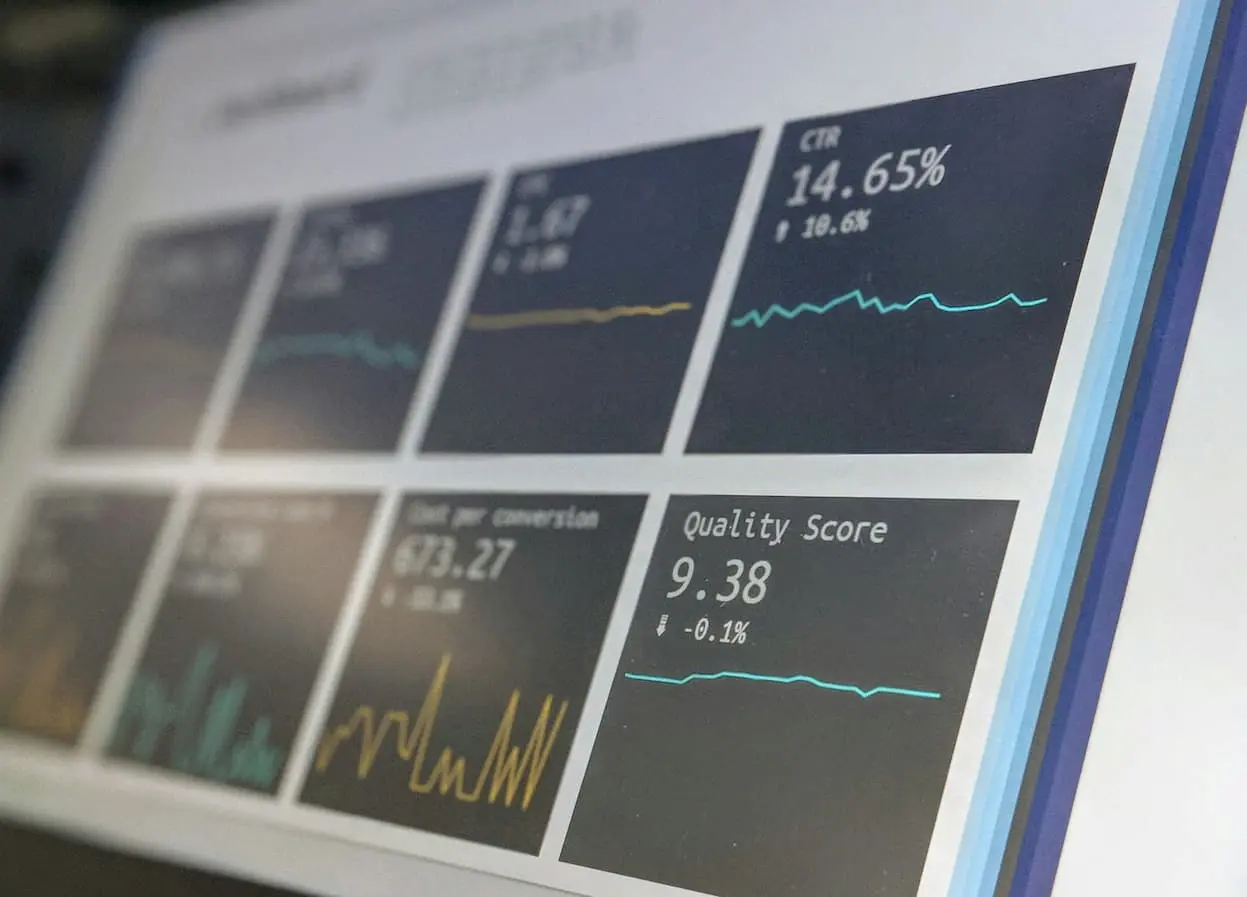The Best Way to Track and Optimize Your Affiliate Link Like a Pro

Affiliate marketing is one of the best methods to make money online, but adding links to your material isn’t enough to achieve success. Making data-driven judgments and comprehending how your connections function are essential to becoming a successful affiliate marketer. You must constantly monitor and optimize your affiliate links if you want to succeed in this industry.
In this first installment of the series, I’ll explain the importance of tracking affiliate links, how to pick the best tools, and the first actions you take to make sure every connection generates the most money possible.
The Significance of Monitoring Your Affiliate Links
A common mistake made by novice affiliate marketers is to haphazardly insert links into articles in the hopes of generating purchases. Without adequate tracking, you are effectively speculating about which links and tactics will be effective. There are numerous important advantages to tracking and optimize your links:
1. Determine the Best-Performing Links
You can rapidly determine which deals or products bring in the most money by keeping an eye on your links. With the use of this data, you can stop wasting time on links that don’t convert and instead concentrate on initiatives that do.
tracking may show that one link accounts for 60% of your sales while the rest hardly do anything. You risk continuing to promote connections that aren’t producing results if you don’t track them.
2. Recognize Conversions and Traffic
You can learn more about your traffic’s origins and conversion rates by tracking. You might discover that organic blog posts or email marketing perform differently from social media traffic. You can effectively allocate your marketing efforts if you know which channels generate the highest conversion rates.
This is a very useful insight. For example, it could be time to adjust the link placement or content style on Instagram if your posts receive a lot of traffic but few conversions.
3. Raise ROI
By monitoring underperforming links, you can improve your return on investment (ROI) by taking corrective action. If a link performs poorly on a regular basis, you can either fix it by adjusting its format, call-to-action, or placement, or you may eliminate it completely.
Without increasing visitors or investing more money, you can dramatically boost revenue by concentrating on what works and getting rid of what doesn’t.
By regularly monitoring and improving your affiliate connections, you transform hunches into a methodical, data-driven approach. Performance measures, not conjecture, inform every choice.
Selecting Appropriate Tools
Choosing the appropriate tools is crucial to track and optimize your affiliate links. Various tools have distinct functions , and integrating them can provide you with a thorough picture of your affiliate performance.
1.ThirstyAffiliates
A WordPress plugin called ThirstyAffiliates makes link management and cloaking easier. This application allows you to:
- Convert lengthy, ugly affiliate URLs into neat, branded links;
- Group links according to categories for simple analysis.
- Clicks can be tracked directly in WordPress.
Cloaked links increase click-through rates (CTR) and have a more polished appearance. You can keep complete control over your affiliate links with ThirstyAffiliates, which also makes sure that each link can be tracked and optimized.
2. Pretty Links
Another WordPress plugin that focuses on link management and reporting is called Pretty Links. Among its advantages are:
- Comprehensive click-through reports for every link.
- Affiliate campaign redirection management.
- Sorting and classifying links according to product type or campaign.
I frequently use ThirstyAffiliates with Pretty Links to obtain several levels of tracking and reporting. I can compare link performance across campaigns and channels thanks to this dual strategy.
3. Google Analytics
Google Analytics is a powerful, free tool that offers in-depth information on how users engage with your website. You may monitor which traffic sources result in clicks by utilizing UTM parameters with your affiliate links.
- The way visitors move across your website following a link click.
- Revenue and conversions associated with particular campaigns.
3. ClickMeter/Voluum
Platforms like ClickMeter and Voluum offer comprehensive tracking, reporting, and A/B testing features for seasoned marketers. With the help of these tools, you can:
- Keep an eye on several initiatives running on several networks.
- To maximize performance, test different link and landing page variations.
- Obtain comprehensive information on clicks, conversions, revenue, and return on investment.
These solutions are perfect for marketers who oversee numerous websites or extensive affiliate efforts, even if they require a subscription fee.
For effective tracking and optimization of my affiliate links, I personally use Google Analytics in conjunction with a WordPress plugin. I can monitor performance without feeling overloaded with data thanks to this configuration, which strikes the ideal mix between usability and insightful power.

Configuring and Tracking Your Affiliate Links to Get the Most Out of Them
Setting up your links for optimal performance is a crucial next step in affiliate marketing, after selecting the appropriate tools. In addition to guaranteeing precise tracking, proper setup offers useful information that lets you efficiently optimize your efforts. I’ll outline my precise procedure for cloaking, labeling, organizing, and tracking affiliate links in this section to make sure each one increases your revenue.
1. Hide Your links
One of the first things you do is cloak affiliate links. Long, complicated URLs can lower click-through rates (CTR) and frequently give the impression that they are unreliable. A common affiliate link would resemble this, for instance:
https://www.example.com/product?id=12345&ref=affiliate
After cloaking, it becomes:
https://yourwebsite.com/productname
Many advantages come from this minor adjustment:
- Expert appearance: Branded, spotless links inspire clicks and appear reliable.
- Users are more likely to click on links that appear tidy and pertinent, which results in higher click-through rates.
- Easier tracking: With your tracking tools, cloaked links are simpler to control and keep an eye on.
I generally use Pretty Links and ThirstyAffiliates for cloaking, as they both work well with WordPress and provide thorough click monitoring. Along with effectively managing thousands of connections, these solutions allow you to classify your links and create redirects.
2. Add UTM Parameters to Your Links
Adding UTM settings for more detailed tracking comes after your links have been hidden. You may see the precise source of traffic and the most successful campaigns by using UTM parameters.
The primary parameters that I consistently incorporate are:
• utm_source: Indicates the source of traffic (e.g., blog post, email newsletter, Facebook).
• utm_medium: Indicates the kind of channel, including social, paid, and organic.
• utm_campaign: Monitors the particular advertising campaign or promotion that is generating traffic.
An example of a fully tagged link might be as follows:
https://yourwebsite.com/productname?utm_source=facebook&utm_medium=social&utm_campaign=spring_sale
By using UTM parameters, you can:
- Determine which platforms produce the most clicks and conversions.
- Identify the campaigns or content that are generating the most income.
- Optimize underperforming channels by making well-informed decisions.
Knowing exactly which tactics are effective will allow you to scale campaigns with confidence once you track and optimize your affiliate links using UTM parameters.
3. Put Your Links in a Category
In order to analyze performance, organization is essential. My affiliate links are grouped by:
• Product type: Group links that advertise related products collectively.
• Niche: Sort by subject or target audience.
• Campaign: Monitor the links utilized in particular advertising campaigns.
This method facilitates the identification of trends. For example, I can concentrate my content strategy on tech-related posts if links advertising tech goods routinely perform better than those marketing lifestyle products.
Link organization also saves time when conducting audits or producing reports. It guarantees that you can rapidly determine which initiatives are generating steady income and which links require optimization.
Keeping an Eye on and Improving Your Affiliate Links Expertly
We discussed how to set up your affiliate links, cloak them, tag them with UTM parameters, and arrange them for simpler analysis in the earlier sections of this series. We’ll now go into great detail on tracking performance indicators, improving underperforming links, and utilizing data to improve your approach. Any affiliate marketer who wishes to increase sales and grow their company professionally must follow these procedures.
Tracking Performance Indicators
Merely monitoring your affiliate links is insufficient. To make sure that your campaigns are successful and producing results, you must continuously track important performance indicators. Among the most crucial metrics are:
1. Click-through rate CTR :
CTR calculates the proportion of users who click on your affiliate link out of all those who view it. A poor CTR could be a sign of:
- Inadequate link placement in your content.
- Ineffective or ambiguous calls to action (CTAs).
- Links that don’t align with the user’s expectations or intent.
A link that is tucked at the bottom of a blog post, for instance, might not get as many hits as one that is featured in a prominent button or included in a table of product reviews. Increasing affiliate revenue frequently starts with improving CTR.
2. Rate of Conversion
The number of clicks that result in a sale is measured by the conversion rate. Without conversions, high traffic has no purpose. In order to maximize conversion rates
- Verify that the landing sites you link to are high-quality and pertinent.
- Align the link’s surrounding material with the promotion.
- Make use of compelling CTAs such as “Claim Your Free Trial” or “Get 20% Off Today.”
By regularly monitoring conversion rates, you can determine which connections are working and which need improvement.
3. Income from Each Link
The amount of money each affiliate link brings in is measured by revenue per link. This measure aids you:
- Determine which of your links are the most lucrative and increase your efforts to promote them.
- Identify the initiatives that perform poorly in spite of strong traffic.
- To concentrate resources on high-revenue opportunities, decide whether to retire low-earning linkages.
By tracking link revenue, you can make sure that each link on your website improves your bottom line.

Improving Poorly Performing Links
The next stage after obtaining performance data is optimization. These are the tactics I employ:
1. Adjust Link Location
Content-buried links frequently perform poorly. I relocate poor-performing connections to prominent locations like:
- A product review’s conclusion.
- In tables of comparison.
- Adjacent to compelling calls to action.
CTR and conversion rates are greatly increased by strategic placement.
2. Make Calls to Action Better
Clicks and conversions can be increased by rewording link text from generic phrases like “Click Here” to more compelling CTAs like “Get 20% Off Today” or “Start Your Free Trial.” Making the value obvious to users and creating a sense of urgency are the objectives.
3. Examine Various Formats
Link format experimentation is essential for optimization. Among the options are:
- Content-based text linkages.
- Buttons with eye-catching patterns.
- Banner ads for campaigns with a big impact.
You can find out which style appeals to your audience the most by experimenting with various formats.
4. Update Links Frequently
Landing pages, offers, and products evolve. I always make sure that my affiliate links take users to up-to-date, pertinent information. Outdated or broken links can lower income and erode user trust.
Frequent audits guarantee that your linkages are constantly operating at their best.
By optimizing underperforming links, you can make sure that every link on your website makes a meaningful contribution to generating income.
Refining Your Strategy with Data
The information gathered from monitoring your links gives you useful information that directs your entire marketing plan. This is how I make use of the data:
1. Encourage Links That Perform Well
After determining which links result in the highest conversion rates, concentrate your content production efforts on the goods or services that are linked to these connections.
Increasing the amount of material you produce around high-performing links will increase revenue and guarantee that your efforts are directed effectively.
2. Update or eliminate underperforming links
Not every link will function in the same way. To preserve efficiency, update or eliminate links that continuously perform poorly. A poor-performing link can occasionally be transformed into a high-converting asset with a straightforward adjustment to the format, CTA, or placement.
3. Try Out Novel Campaigns
Future promotions should be guided by the lessons learned from past campaigns. For instance, devote more funds or material to a particular channel if it regularly generates more traffic than others. With data-driven experimentation, you can scale campaigns with assurance.
Professional affiliate marketers are known for their ability to make decisions based on data. You can scale revenue without relying on guesswork if you regularly monitor and improve your affiliate links.
Extra Advice for Optimal Outcomes
In addition to tracking stats and improving links, I employ a few more strategies to improve affiliate performance:
1. Make use of heatmaps
Hotjar and Crazy Egg are two tools that display the precise locations of user clicks on your website. You may maximize exposure and clicks by placing links in high-traffic regions by examining heatmaps.
2. Comparative Analysis
Examine several CTAs, link locations, and content types to see which produces the best results. The ongoing practice of A/B testing guarantees that your links are constantly operating at their best.
3. Incorporate Email Affiliate Links
One effective strategy for promoting affiliate items is email marketing. To find out which emails generate the most conversions, monitor how well links perform in email campaigns. Generic blasts are frequently less effective than personalized emails.
Conclusion
how can I monitor and improve my affiliate links?
Success in affiliate marketing isn’t random; it requires strategy, and we’ve created a comprehensive road map to master it:
• Setup: Use programs like Google Analytics, ThirstyAffiliates, and Pretty Links to categorize your links, add UTM parameters, and cloak them.
• Monitoring: Keep an eye on important data like revenue per link, conversion rate, and click-through rate to determine which campaigns are most effective.
• Optimization: Revise calls-to-action, test various forms, update out-of-date links, update link positioning, and use data to optimize your approach.
Every choice you make gets informed by data when you continuously monitor and improve your affiliate links. Campaigns scale well, ineffective connections are fixed or eliminated, and high-performing links receive greater attention. Every link contributes to revenue growth when careful tracking, ongoing optimization, and smart testing are combined.
To put it briefly, the key to mastering affiliate marketing is to properly set up links, keep a close eye on performance, and optimize constantly. You may turn your affiliate efforts into a dependable, revenue-generating business that grows with time by using this strategy.
IF you want more information visit this posts and affiliate tools .













